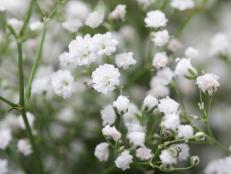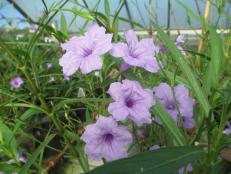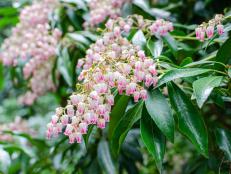Lily

Plant type: Perennial
Hardiness: USDA Zones 3 to 10, depending on species or cultivar
A bulb that becomes a stately plant and produces showy flowers. The familiar Asiatic lily has large, dinner-plate-sized flowers. Comes in a variety of flower colors and types. Bloom colors include white, yellow, pink, orange and red. Speckled and fragrant forms available. Sturdy plants with narrow, green leaves in whorls around stems. Plant size ranges one to six feet tall and about one to two feet wide.
How to use it: Plant in mass or as a specimen. Use in the middle to the back of a mixed perennial border or containers. Cutflower.
Culture: Prefers full sun to part shade and a well-drained soil. This plant does not tolerate wet sites. Bulbs can be planted in spring or fall. Plant bulbs about six to eight inches below the soil surface; because some species may need to be shallowly planted, read the package label for recommended planting depth. After purchasing bulbs, plant as soon as possible. May require staking. Primarily propagated through division in the fall. Divide when plants have reduced flowering. Deadhead spent blooms. No serious problems with pests or diseases.
Special notes: May be poisonous to pets. Some species attract wildlife, including hummingbirds.
Selected Cultivars and Species
- 'Stargazer'. Oriental lily that has crimson red to hot pink flowers with white trim in late summer. Reaches three to five feet tall.
- Madonna lily (L. candidum). Has fragrant yellow-white flowers. Reaches three to five feet tall. Zones 4 to 9.
- Easter lily (L. longiflorum). White trumpet-shaped flowers. These plants are forced to bloom in the greenhouse and are commonly sold at Easter. Wait until the danger of frost has passed before planting outdoors. Zones (7)8 to 10.
- Turk's cap lily (L. martagon). Has delicate flowers with the petals curled backward, forming a turban. Turk's cap lilies can tolerate shade better than other lilies. Use in a woodland garden. Zones 3 to 9.














































